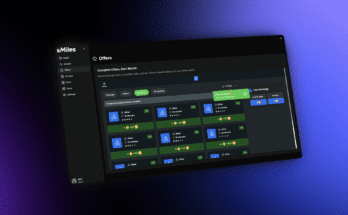For example, an area that was once a lake, 330 million years ago, is now jam-packed with plant and animal fossils. There are even ancient traces of rain, which made little indentations that have been naturally preserved. Some of these impressions are elongated in one direction, which can be used to estimate wind speed. A student might find these rain prints, examine them in high resolution, and then write something about how they might be used to understand what Earth’s atmosphere was like back then.
The students were engaged, and the quality of their work was similar to what the instructors had seen in previous field seasons. “Two of the projects were close to being publishable,” says Genge.
Normally, a human instructor would be around to help out, but that wasn’t possible with these single-player game worlds. In their place was a diminutive flying robot that followed the students around, guiding them to geologic curiosities. “I gave her quite a sassy personality,” Genge says. She teased the students if they looked clueless, and sometimes made references to Chris Hemsworth.
The goal was serious, but it was a game platform after all, and Genge and Sutton couldn’t resist throwing in some unexpected diversions. A precarious cliff edge in the bona fide Sardinia became, in the virtual version, a place to fling students into the sea, whereupon a shark chased them as they swam to a nearby island.
For the next version, Genge spent three weeks in the Scottish Highlands, driving around and taking loads of drone shots, which he used to re-create the landscape around the village of Kinlochleven, another pre-pandemic field trip destination. He made waterfalls, planted 30,000 trees, and (in an act of perhaps unnecessary fealty to reality) populated the hills with midges. His son Harry made the buildings—refuges from said midges.
By this point, there had been another development milestone: Sutton had finished a multiplayer version of the game. All the students could exist as avatars in the same space, communicate with their voices, point at things, make measurements of the orientations and types of rock, and plot out bands of geology on a map. “And it made all the difference,” Genge says. “It suddenly became so much more real.”
As the students traversed the region, filling in their geological maps as usual, the instructors checked in on their progress. “I could tell it was effective, because the students behaved like students,” says Genge. Everyone had quad bikes, “so there was a certain amount of racing going on instead of mapping.” One student messaged him to politely ask how to get a quad bike out of a tree. And after the day’s work ended, students were using the digital Scottish dimension to just hang out.
In class, along came a unit on meteorites, a new addition to the syllabus. Genge had been worrying about how to keep those eight lectures engaging during pre-pandemic times: The department only had five meteorite samples between 30 students, which limited their individual exposure to hands-on instruction.
Fortunately, the virtual field trips provided an obvious solution. “Essentially, we went on this eight-week space adventure,” says Genge.
After an introductory lecture about distinguishing meteorites from regular rocks, the students were given quad bikes and told to find meteorites hidden across a vast desert. Several of the fragments had come from a single meteor that had exploded in the atmosphere, scattering its parts like cosmic shotgun pellets. Could the students find these related pieces of debris and piece the puzzle together?
As they conducted their detective work, a planet with Saturn-like rings slowly rose above the horizon. Some of the more exploration-minded students wandered off to find an impact crater with a damaged spacecraft inside. As they perused the wreckage, one student asked why it had gun turrets. “Well, space is a dangerous place,” Genge replied.

